Kathy Shafer is quick to credit her husband, architect Tom Shafer, as the visionary in their relationship, but it was she who first recognized the possibilities in a virtually untouched Highland Park house designed by the renowned modernist architect Samuel Abraham Marx and built in 1957. Ultimately, Tom agreed, and they have lived there happily since 1998.
“It’s on three ravines, and you see nothing but trees,” she explains. “You would never know you’re so close to Chicago.”
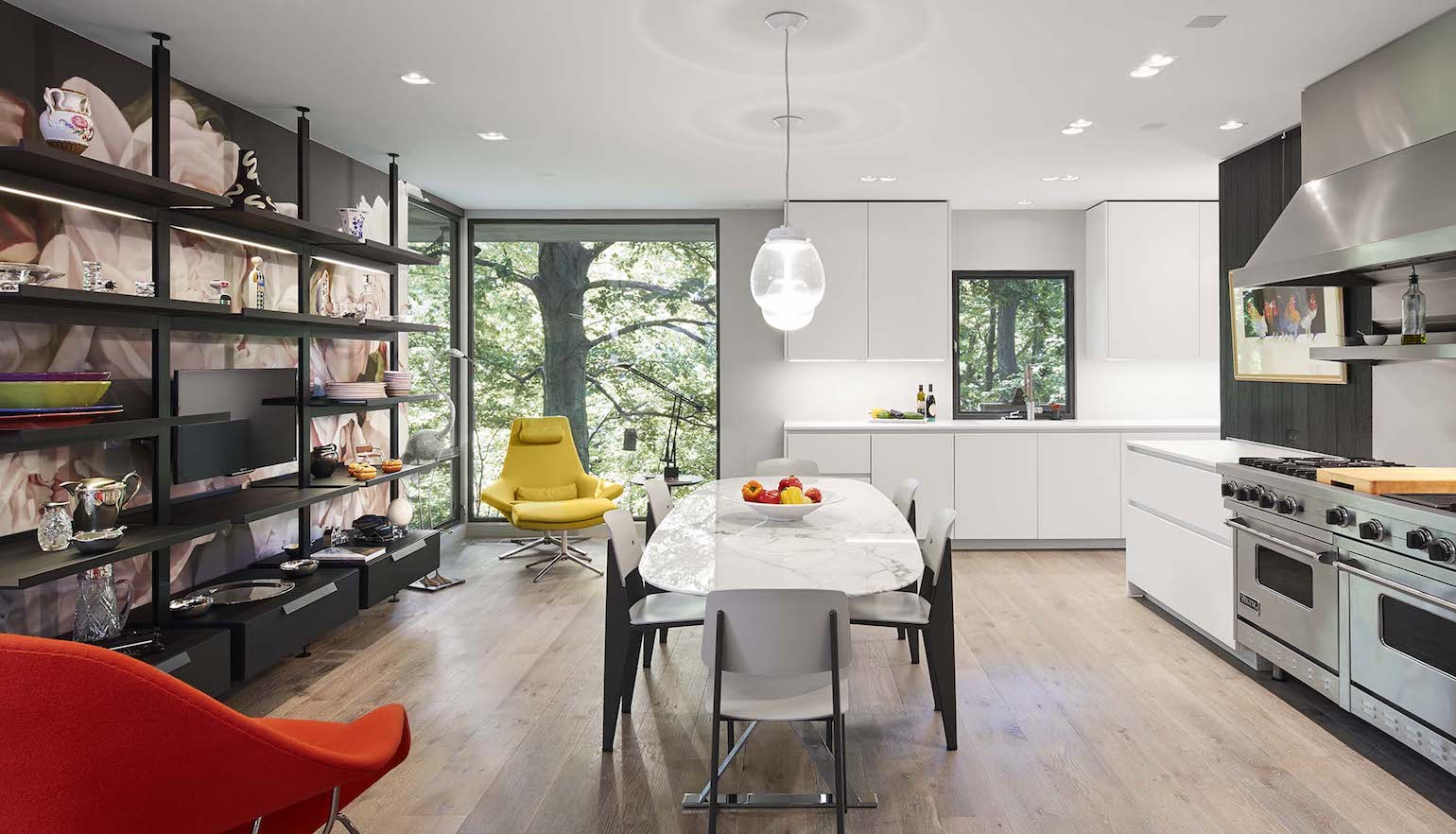
They have touched every surface in some form or fashion, most recently the kitchen. In a down-to-the-studs renovation, they removed a load-bearing wall that bifurcated the space and ripped out the original metal St. Charles kitchen cabinets, which they had repainted together years earlier. “Welcome to living with an architect,” Kathy says with a chuckle.
But the effort, she says, is well-worth the result—an open, light-filled space with lush treetop views. Sleek white cabinetry and quartz countertops pay homage to the home’s midcentury lines, while wood wall paneling treated in the Japanese tradition of shou sugi ban, a charring process that creates a striking blackened finish, add an organic touch.
Introducing a whimsical, highly graphic layer, the opposite vertical plane is covered with a custom digitized wall covering emblazoned with giant peonies against a black background by Area Environments. It’s a dramatic backdrop for a metal shelving unit staged with objects they have collected over their many years and travels together. One such object—a La Monde papier-mâché sculpture of a white herring from a shop in Paris—stands alongside it, pairing whimsically with an eye-catching yellow chair from Maxalto.
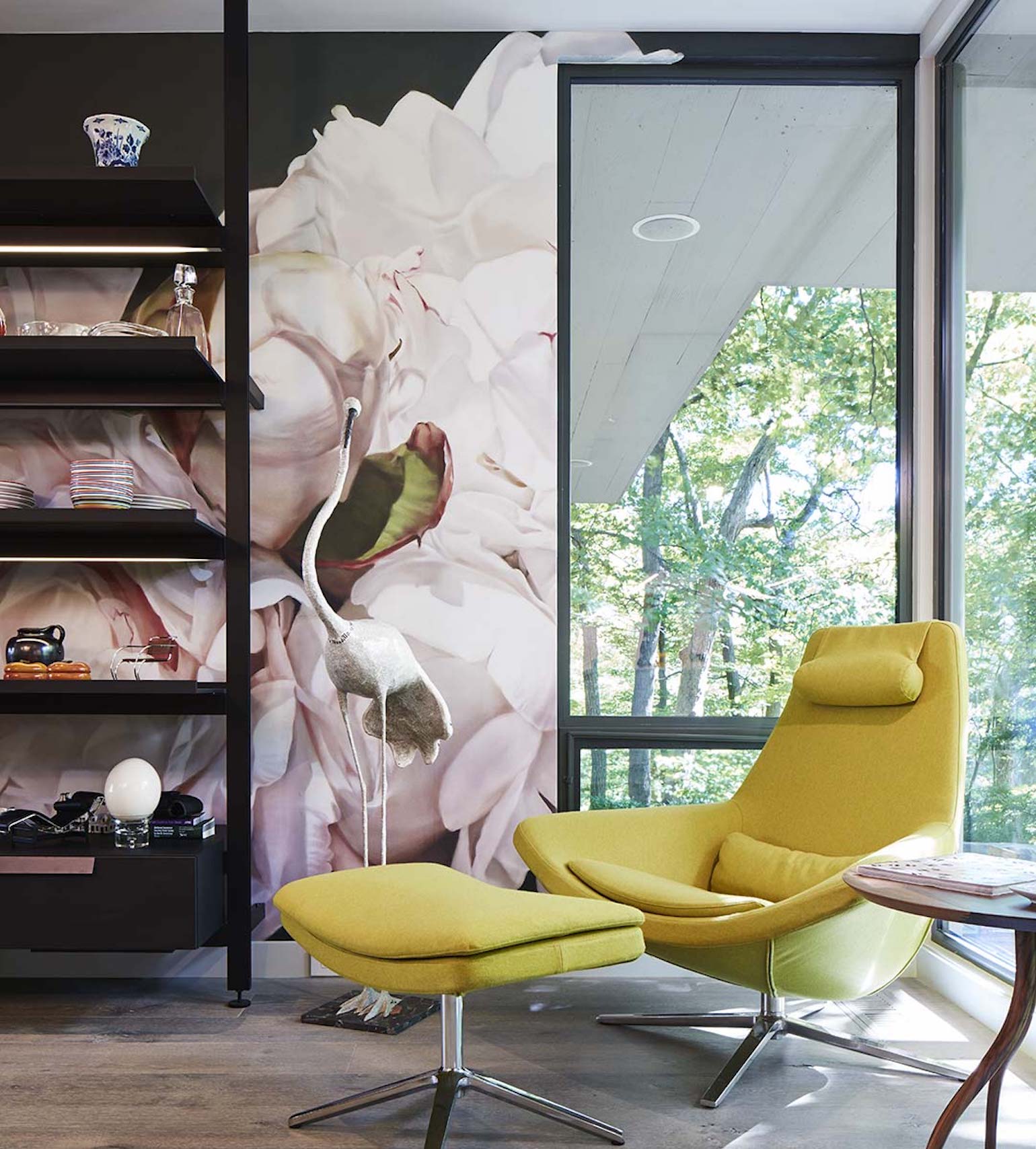
In the center of the light-filled room, a pair of modern glass pendants illuminate a long oval marble-topped table, which serves as both a workspace and a place to break bread.
“This kitchen was really a labor of love and craftsmanship,” she says. “It’s been a big hit with our family.”
(Click here to read about another North Shore house by architect Samuel Abraham Marx).
Working Together
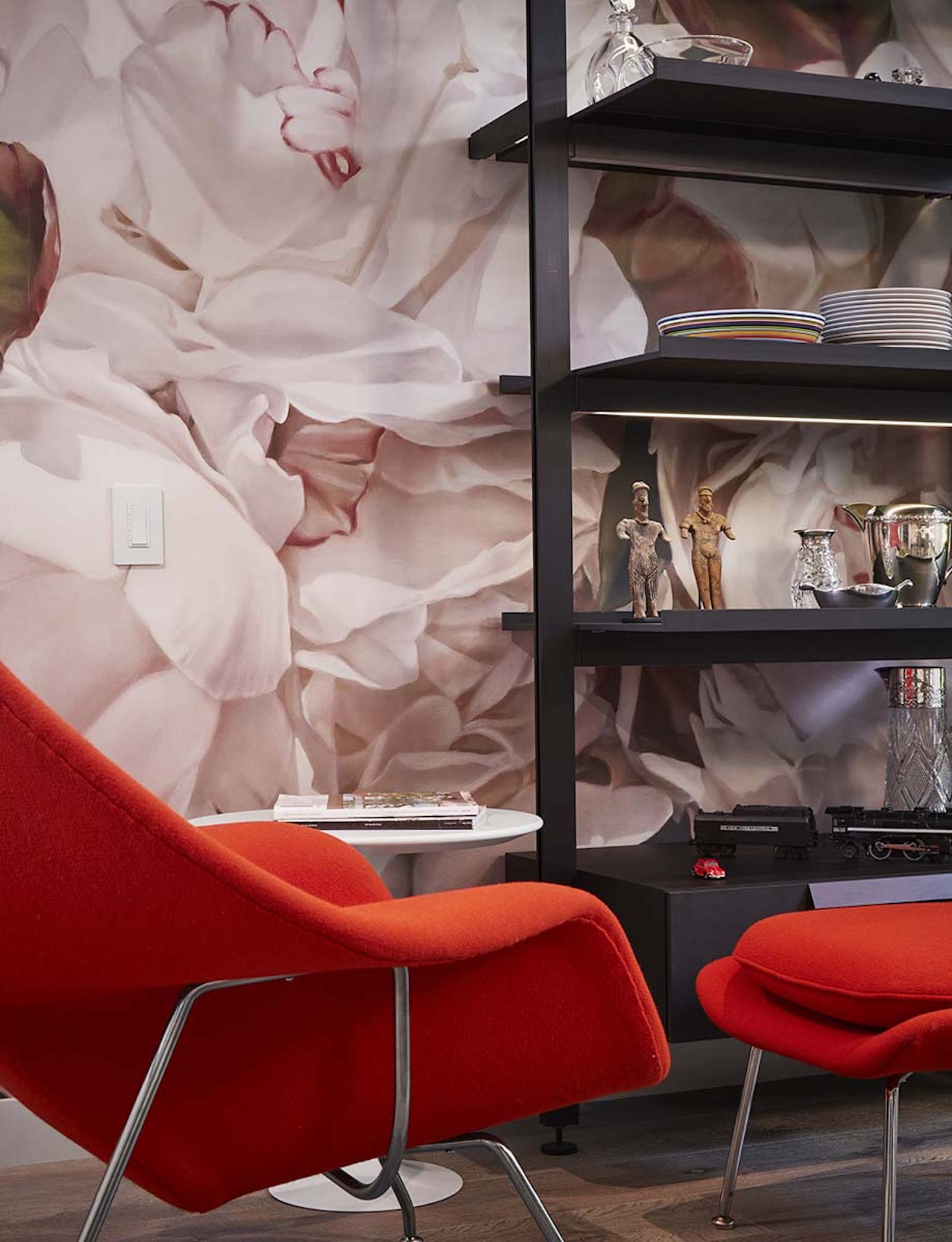
No stranger to working together, the couple met while managing the same late-night coffee shop in college. When Kathy stepped back from her jet-setting career as a foreign exchange trader to spend more time with the couple’s then-young children, she joined Tom, who had recently launched his own firm. After designing office towers at firms like Lohan Associates and KPF, the young architect wanted the sort of direct connection with the end user that residential architecture affords.
“Budgets trumped beauty, and detail was forgotten,” he says, of his former gig. “It didn’t take long to realize the importance of collaborating with the end user of the project; someone who has real skin in the game.”
In the ensuing decades, he has made his mark on the North Shore, both designing new modernist homes and revitalizing historic structures, racking up numerous preservation awards and other accolades in the process.
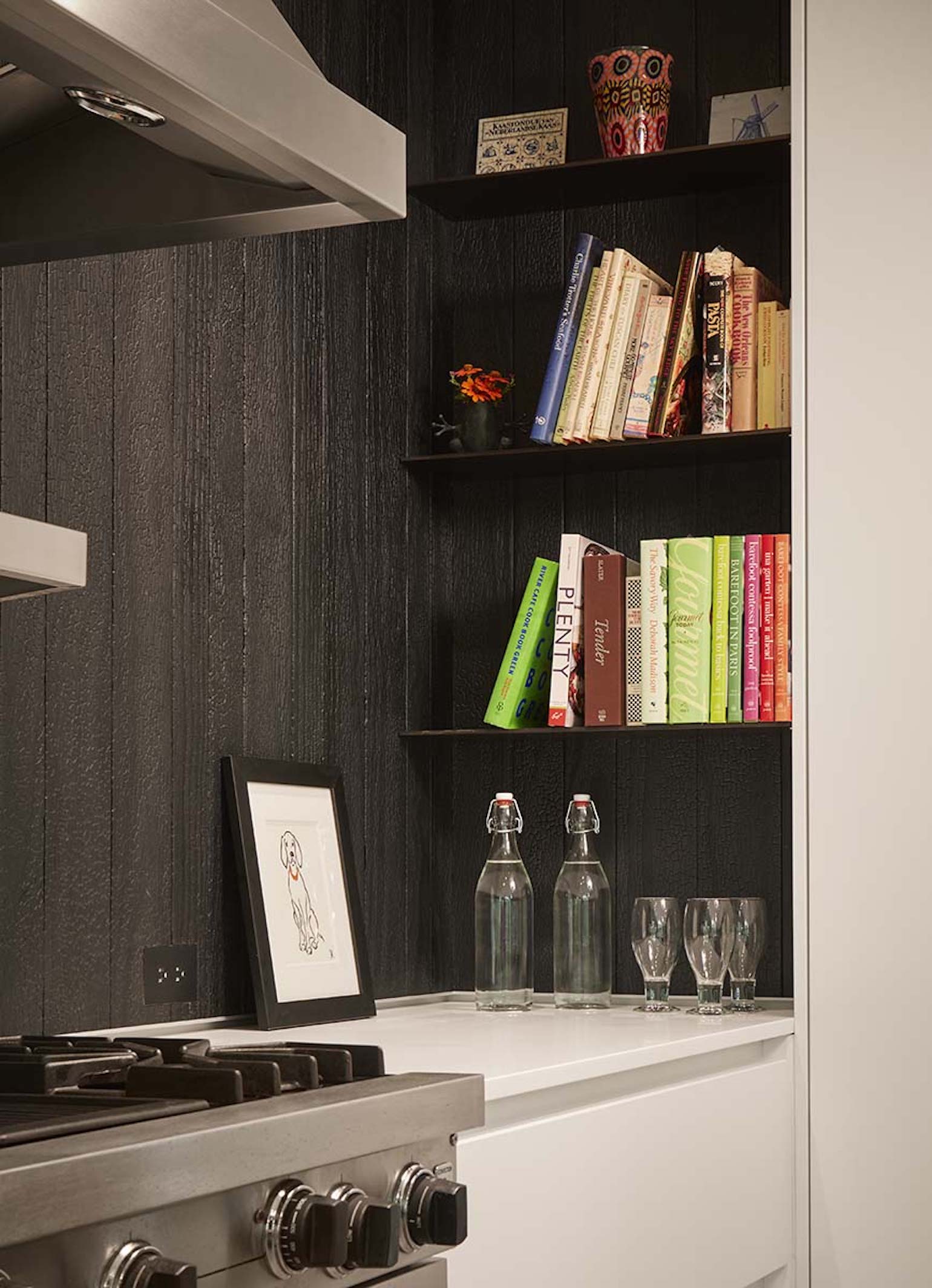
“Although my tendencies lean toward modernism, a good portion of our work is traditional, as long as it is authentic,” he explains. “What I mean by that is, we pursue work that respects historic architecture and its traditional methodologies; there is nothing faux about this company.”
As the firm’s CFO, Kathy crunches the numbers while overseeing marketing, handling client outreach and managing the firm’s interior design practice—her favorite part of the job.
“Our house surprises people because it has unexpected art and furniture in it that reflects who we are,” she says. “I try to bring that to a project once I know the client better, finding unusual and unexpected things for them, too.”
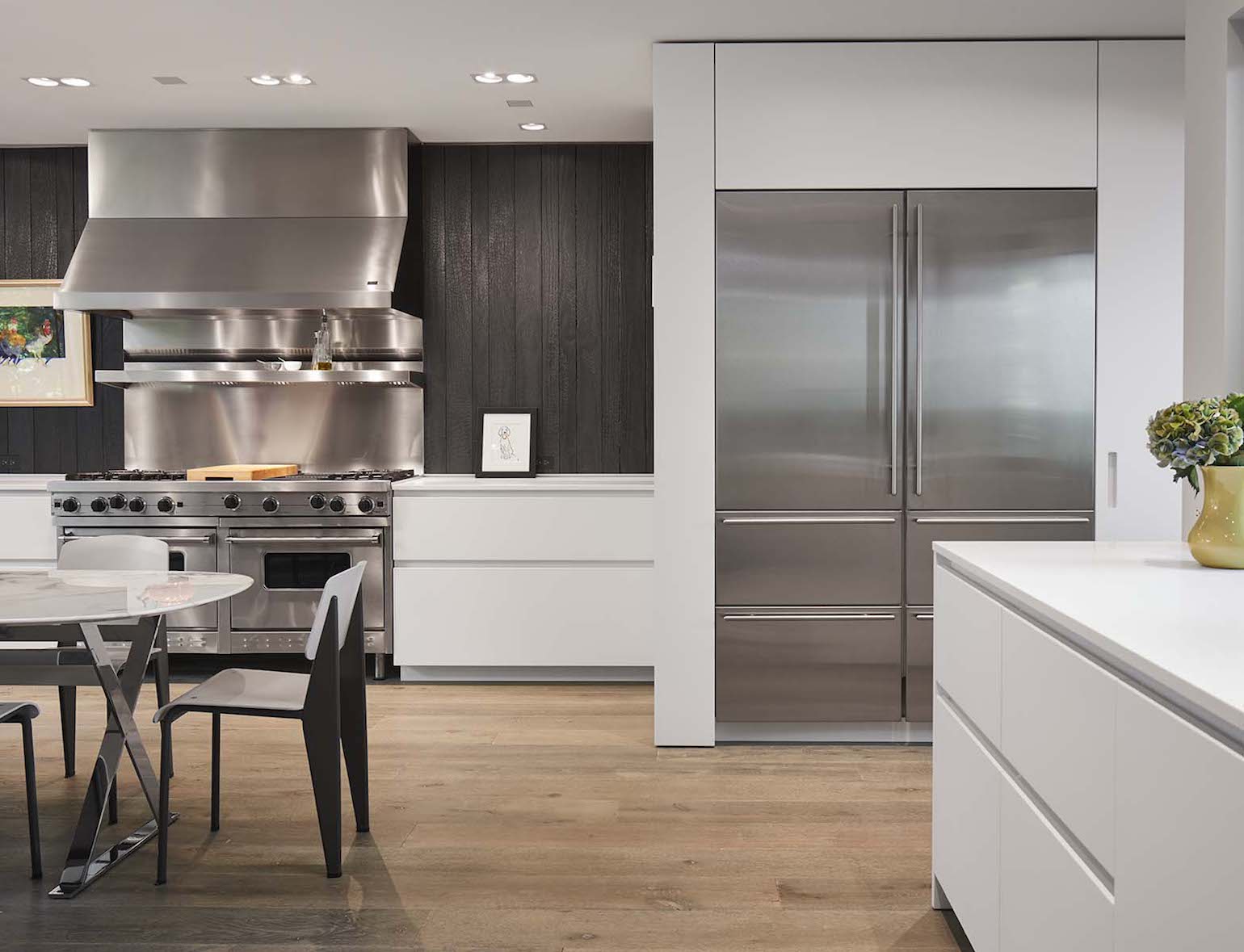
Her good financial stewardship has allowed the firm to stay the course in the aftermath of the September 11th terrorist attacks, the 2008 financial crisis and the recent pandemic.
“I’ve learned over the years that you have to run a pretty good cash balance, so you can ride the waves if something happens,” she says. “As a small business, it’s important to prepare for the worst at all times.”
Giving Back
But some things are impossible to prepare for. When Tom and Kathy’s daughter, Sydney, was a freshman in high school, she was diagnosed with Crohn’s Disease, a chronic inflammatory bowel disease. It sapped the teenager’s energy and made it impossible for her to continue pursuing ballet, which she had practiced for hours weekly in a rigorous program.
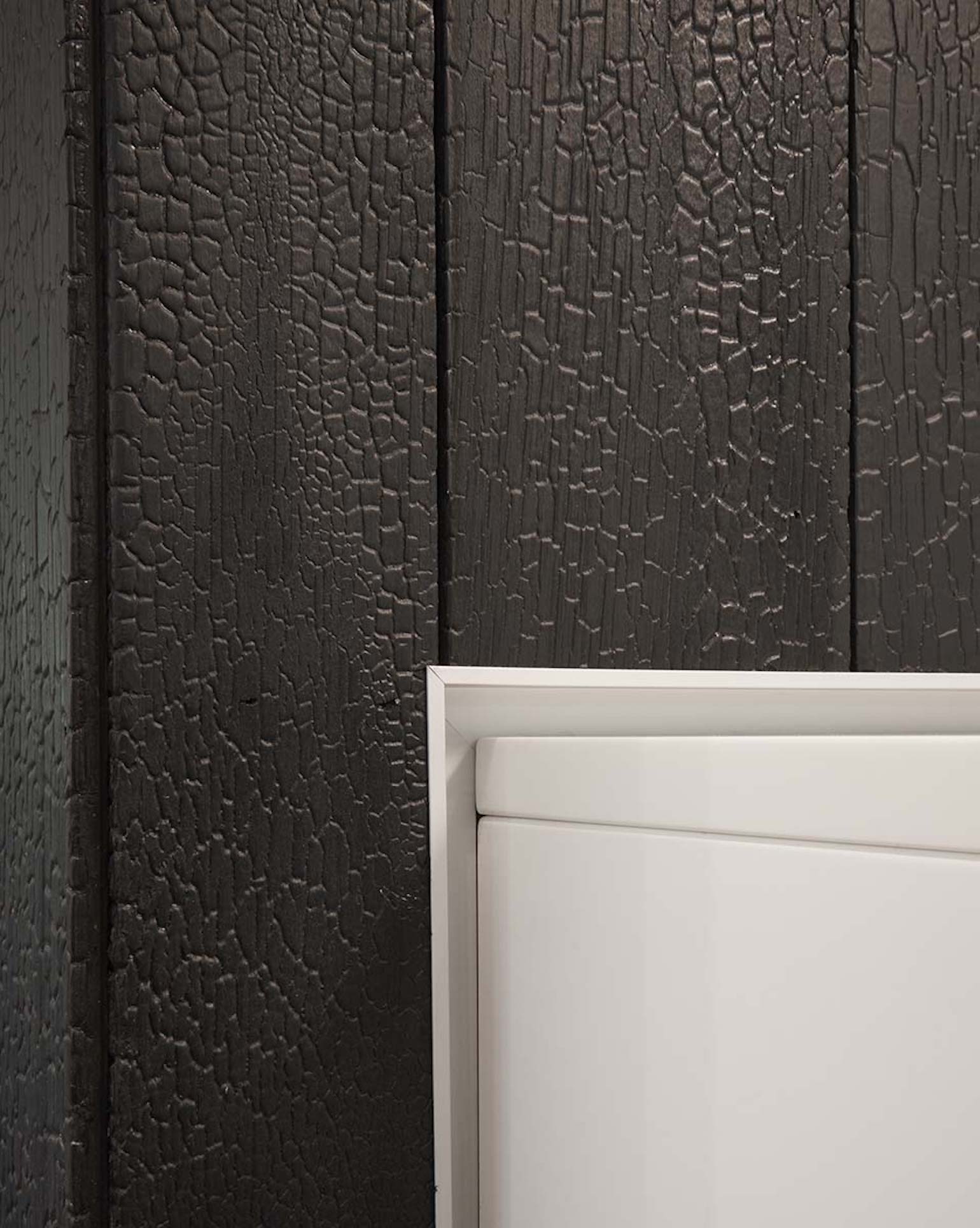
Unwilling to sit idly aside, Kathy learned everything she could about the condition.
“It was all-consuming,” Kathy says. “It changed a lot for us, because she was sick for a really long time.”
In a turn of fortune, a mutual friend introduced the Shafers to Dr. David T. Rubin, a renowned gastroenterologist at the University of Chicago Medicine and a lead scientific advisor for the Gastro-Intestinal Research Foundation (GIRF). With his help, Sydney’s condition steadily improved, and today she is thriving.
Driven to pay it forward, in 2019, Kathy joined GIRF’s Board of Directors, recently co-chairing the 2021 ball, which was held virtually this spring.
“We put something together that not only raised the money we needed but was also a good showpiece for the foundation,” she says. “Hopefully our work will provide the funding that leads to cures and at the very least, medical support and solutions, for those suffering from digestive diseases.”
This article originally appeared on spacesmag.com.
How to Help:
If you’re interested in helping more people have access to design services, you can support the nonprofit Designs for Dignity, which transforms nonprofit environments through pro bono design services and in-kind donations.
More from Better:
- Bill Murray and Siblings May Bring Caddyshack-themed Restaurant to Wilmette
- 12 Ways to Support LGBTQ+ Restaurants and Bakeries During Pride Month and All Year Long
- Convito Cafe in Wilmette Shares the Unique Story Behind One of Their Favorite Sauces

Tate Gunnerson is a Chicago-based freelance journalist with an equal appreciation for natural beauty and good design. He is a passionate supporter of St. Jude Children’s Research Hospital and the National Kidney Foundation.
